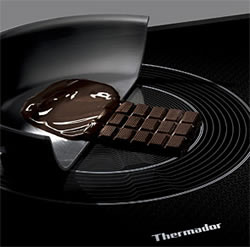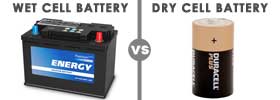Difference between Induction Cooktop and Oven
Key Difference: Induction cook top is a type of cook top that uses the induction method of creating heat. Induction technology converts electricity into heat, but using a different method. It uses electricity to produce heat inside the pan, as in it directly heats the utensil on the stove. An oven is a thermally insulated chamber that is used for heating, baking or drying a substance. It is most commonly used for cooking and baking.
People that are knowledgeable about cooking know that there are many different kinds of cooking utensils, cook tops, cooking methods, etc. However, for the people that are not well-versed with only know that there is a stove, which heats up and where the food is placed to heat. Though, this is accurate. There are many ways that a stove can function. The two most common ones are gas and electric. There is third cook top that has just started gaining recognition because of its power saving abilities; it is known as Induction cook top.
 Induction cook top is a type of cook top that uses the induction method of creating heat. Many people have heard about induction stoves or induction cook tops being available, but they do not know what it is or how it works. Induction technology converts electricity into heat, but using a different method. It uses electricity to produce heat inside the pan, as in it directly heats the utensil on the stove. Let’s simplify. Induction stoves are usually glass stoves, underneath which there is a coil. When an alternating current flows through the coil, it produces an oscillating magnetic field; this field induces an electric current inside the pot causing it to get hot. However, there is a catch, the utensils used on an induction stove top must be of a ferromagnetic material such as steel or iron pots.
Induction cook top is a type of cook top that uses the induction method of creating heat. Many people have heard about induction stoves or induction cook tops being available, but they do not know what it is or how it works. Induction technology converts electricity into heat, but using a different method. It uses electricity to produce heat inside the pan, as in it directly heats the utensil on the stove. Let’s simplify. Induction stoves are usually glass stoves, underneath which there is a coil. When an alternating current flows through the coil, it produces an oscillating magnetic field; this field induces an electric current inside the pot causing it to get hot. However, there is a catch, the utensils used on an induction stove top must be of a ferromagnetic material such as steel or iron pots.
Induction cook tops have started receiving recognition as they require very little electricity to produce massive amounts of heat, thus saving a lot of energy. Another reason is that they are safer to use as there are no hot flames to burn your fingers on. The clear glass cook tops are also easier to clean and require very little maintenance. The glass-ceramic tops are horrible conductors and hence only a little amount of heat is lost from the bottom of the pan. Induction cook tops can come in many as four to five induction zones, with four being the most common in US and Europe. One and two induction zones are popular in Asia, with one manufacturer has produced a zoneless induction cooking surface, which means as many as five utensils can be placed on the top at a time. The top of the stove does not retain heat when it is turned on or when the utensil is taken off and is cooler to touch.
 An oven is a thermally insulated chamber that is used for heating, baking or drying a substance. It is most commonly used for cooking. The earliest ovens can been dated back to 29,000 BC in Central Europe, where it was used for roasting, boiling and most commonly cooking mammoths. As the technology continued to increase, the construction of ovens got better and better. The advancement included creating an actual oven, making them portable, allowing for different types of cooking such as boiling, roasting, etc.
An oven is a thermally insulated chamber that is used for heating, baking or drying a substance. It is most commonly used for cooking. The earliest ovens can been dated back to 29,000 BC in Central Europe, where it was used for roasting, boiling and most commonly cooking mammoths. As the technology continued to increase, the construction of ovens got better and better. The advancement included creating an actual oven, making them portable, allowing for different types of cooking such as boiling, roasting, etc.
Findings from the Indus Valley Civilization show, in addition to cooking, these ovens were also used to create baked brick to construct sewers, pottery, glass-making and forging. These old ovens were powered by fire, wooden twigs and grass. The advancement of technology also saw ovens being powered by natural gas, wood, coal and electricity. Other advancements saw ovens with fire vents, ventilation windows and chimneys. Various different types of ovens including earth oven, ceramic oven, gas oven, electric oven, microwave oven and convection oven came into existence.
The breakthrough in ovens was seen with the development of the gas ovens, invented in the early 1900s; followed by the electric ovens, invented in the late 19th century, and the microwave ovens. The electric ovens, eliminates the need for dangerous flammable gas, while using resistor heating coils in order to provide heat. The microwave oven uses microwaves in order to produce heat. The microwaves excite the molecules of an object causing friction and producing heat. These ovens, excluding the microwave oven are known as conventional ovens.
|
|
Induction Cook top |
Ovens |
|
Runs on |
Runs of electricity |
Electricity, natural gas (propane, butane, LPG), wood, etc. |
|
Price |
Initial cost is a bit extra, including set up charges. |
The price of the oven depends on initial set up charges and what it runs on. |
|
Heating |
It does not take long to heat. |
Heating depends on the type of oven. While gas ovens heat up fast, electric ovens take a while in order to heat up. |
|
Cooking Time |
Cooking time is less. |
Cooking time is greater in conventional ovens. |
|
Economical |
Induction cook tops are very economical in the long run as they use less electricity to run and heat up food. |
Again the economic factor depends on the type of ovens. Gas ovens are commonly more economic in the long run. Electric ovens are more costly in the long run as electricity is more costly compared to natural gas. |
|
Heat distribution |
Heat distribution is even. |
Gas ovens distribute heat unevenly (more heat from top), while electric ovens have a more even heat distribution. |
|
Temperature Management |
Temperature can be managed using a knob. |
Temperature is easier to manage in almost all off the ovens. |
|
Burners |
Uses large copper coils with glass tops. |
Runs on burners, coils, wood, coal, etc. |
|
Benefits |
It uses less electricity. It does not have any risk of burns. It is easier to clean and use. |
The benefit of each oven depends on the type of oven it is. While electric ovens are easier to clean and cheaper to install; gas ovens are faster to heat up and are cheaper in the long run. |
|
Limitations |
It requires having special steel and iron utensils for cooking. It does not work with glass or aluminum utensils. |
Electric: expensive in the long run, slow heating, useless during power outage; Gas: harder to clean, expensive repairs, danger of leakage, expensive installation. |
Image Courtesy: springtimehomes.com, everydaynodaysoff.com









Add new comment